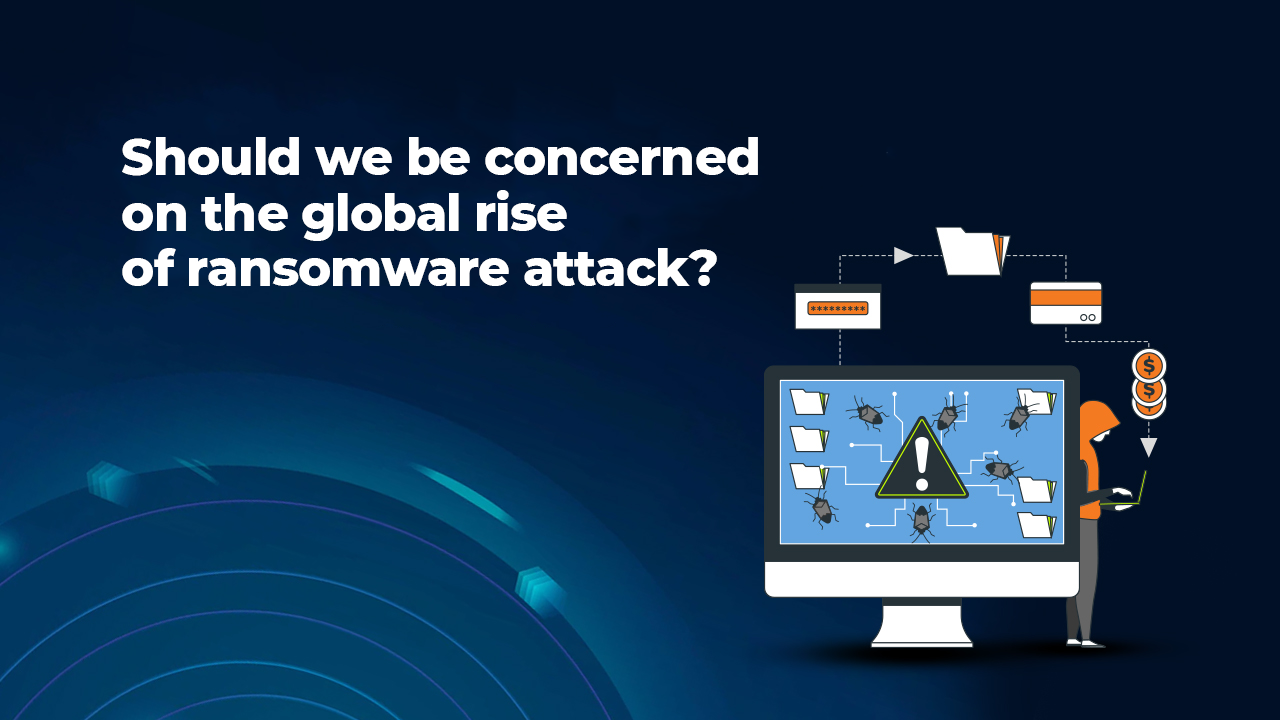
Holiday season is around the corner and everyone’s in a joyous mood world over. The main highlight of this time of the year is the exchange of gifts with family and friends. As we are living in a digital world, most of the shopping is done through online. When families gather around a fireplace, ransomware can sneak in and hold business hostage. Ever wondered what will happen when this occurs?
The prevalence of ransomware assaults has increased significantly over the previous few years. What started as a subculture among hackers has spread to the mainstream phenomenon.
According to research from security vendor SonicWall, 2021 witnessed a record-breaking 623.3 million ransomware attacks, more than double the 304.6 million attempts in 2020.
The causes of ransomware’s meteoric rise are many. The widespread introduction and subsequent ignorance of digital tools may explain the increase. This is a factor – but it’s not the only factor.
As ransomware assaults continue to rise, there are three primary structural causes:
· The emergence of cryptocurrency.
· the advent of RaaS (Ransomware-as-a-Service)
· The increasing sophistication of global cybercriminal “safe havens”
Let’s analyze how these three developments fuel the alarming rise in ransomware assaults and learn how to protect ourselves.
Ransomware increased by 105% in 2021, leading to an astounding 623.3 million attacks around the world. According to the numbers, even March of 2021, the month with the fewest ransomware attacks, had 36.3 million, or “more ransomware than all but one month (November) in 2020.”

Since most companies are reluctant to report ransomware attacks for fear of legal action or bad publicity, this is unfortunately just a large undercount. The true numbers are most likely considerably more depressing.
The Function of Cryptocurrencies
Hackers and bad actors now have more opportunities to profit from ransomware due to the rise of cryptocurrency. As a last resort before the advent of cryptography, attackers might instruct a victim to purchase a $100 gift card from a nearby convenience store and then transmit the attacker the card’s code. In this case, it was simple for authorities to track out the origin of fiat money.
Authorities today have a hard time tracking down ransomware payments due to the anonymous and decentralised nature of cryptocurrency wallets. Cryptocurrency thieves favour Bitcoin and other decentralised digital currencies because a bitcoin wallet is something you can acquire and control without going via a third party.
Scammers and hackers know Bitcoin transactions are traceable. They move their illicit profit through hundreds or thousands of transactions across a dozen wallets. “Mixers” divide up crypto into smaller transactions and “mix” them with other blockchain transactions to hide the paper trail.
Ransomware-as-a-Service (RaaS)
One cause of this rise in ransomware assaults is the proliferation of RaaS.
Ransomware-as-a-service (RaaS) is a malicious offering from the cybercriminal market designed for individuals and organisations who want to launch ransomware attacks but lack the resources to develop and deploy them themselves.
This prepackaged variety of ransomware attacks can be shockingly simple to initiate. Anyone can launch an attack without knowing how to code; all it takes is a click of the “add to basket” button on an online store to initiate an assault.
By satisfying the demand for RaaS, they have made the possibility of ransomware attacks accessible to a significantly larger pool of players; more specifically, they have made it possible for virtually anyone with financial resources to launch an assault.
National safe harbour for attackers
The fact that some nations and territories have become “safe havens” for attackers is another factor that has contributed to the growth of ransomware.
As long as they carry out their ‘job’ outside of Russia’s boundaries, Russia, in particular, pays no attention to danger actors operating within its borders. In addition, ransomware hackers and other types of cybercriminals go to North Korea as a haven where they may operate freely.
Ransomware attackers can thrive when they have safe places to live in their own countries and when governments encourage them or even do business with them directly. They now have places where they can build big offices, hire teams, and use strong infrastructure without worrying about getting in trouble.
How do you deal with ransomware?
To tackle this increasing digital danger, businesses must strengthen their security measures generally. This can be made easier with the help of any number of online threat intelligence technologies. Toolkits with strong detection and response capabilities can alert firms to ransomware efforts and speed up recovery in the event of a successful attack.
That said, prevention is always better than cure. Preventative measures are an effective way to strengthen your security and counteract the rising prevalence of ransomware attacks. Some helpful suggestions are as follows:
1. 80% of the ransomware assaults we’re seeing today are the result of a compromised account (through a stolen password or phishing email) and a lack of two-factor authentication. Encourage your workers to enable 2FA immediately!
2. Maintain a regular schedule of software and system updates.
3. EDR tools can monitor your systems for attack indicators (IOA).
4. Maintain your response methods by backing up your data and testing restorations.
A strong backup and recovery system protects data and speeds up recovery. Keep completely recoverable copies of data to protect against ransomware attacks, data loss, and data breach charges. Dropsuite assists in this.
Dropsuite’s automated, cloud-based backup solution keeps full copies of your emails, chats, Microsoft 365, and Google Workspace data.
